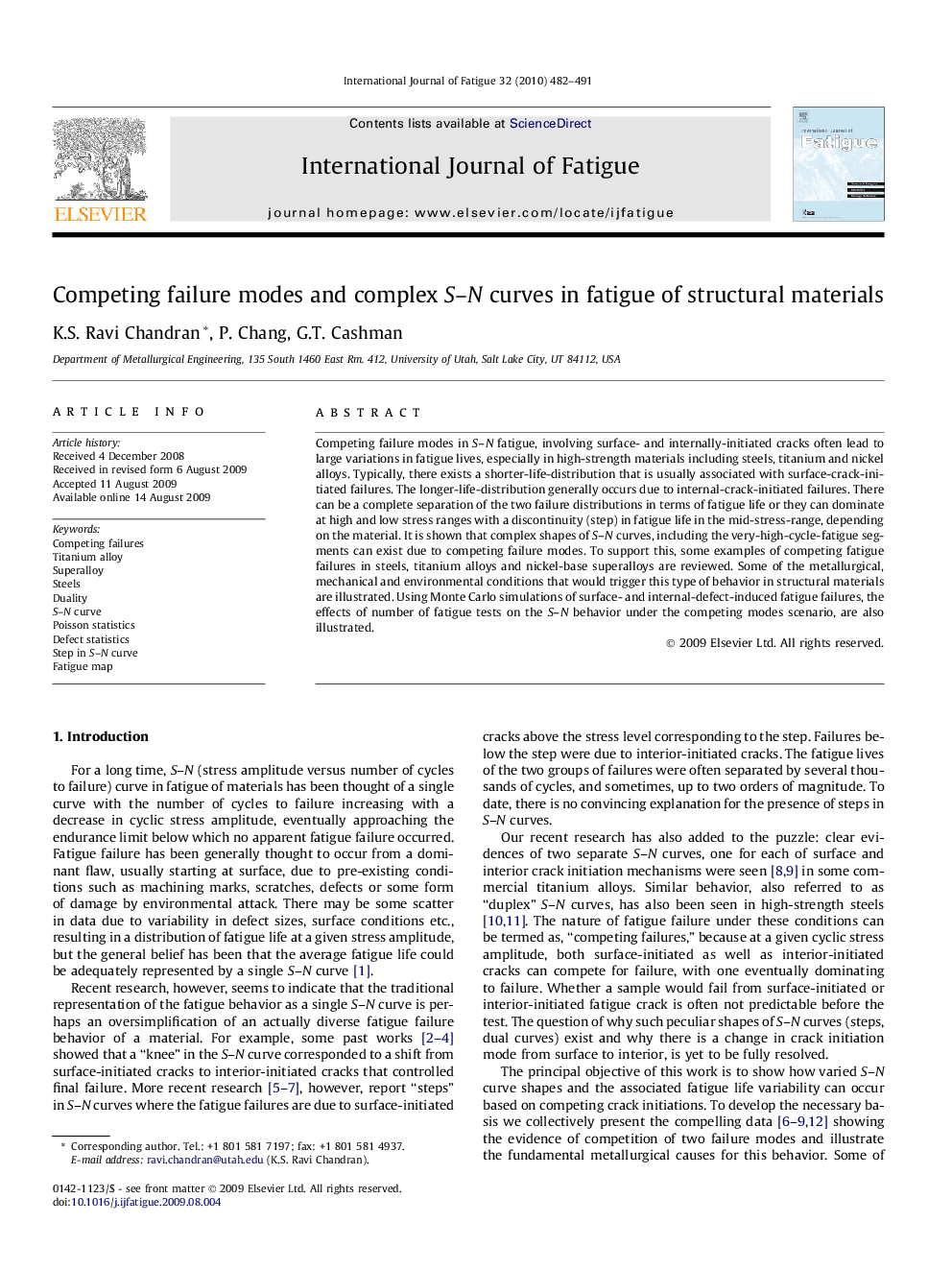| Article ID | Journal | Published Year | Pages | File Type |
|---|---|---|---|---|
| 781389 | International Journal of Fatigue | 2010 | 10 Pages |
Competing failure modes in S–N fatigue, involving surface- and internally-initiated cracks often lead to large variations in fatigue lives, especially in high-strength materials including steels, titanium and nickel alloys. Typically, there exists a shorter-life-distribution that is usually associated with surface-crack-initiated failures. The longer-life-distribution generally occurs due to internal-crack-initiated failures. There can be a complete separation of the two failure distributions in terms of fatigue life or they can dominate at high and low stress ranges with a discontinuity (step) in fatigue life in the mid-stress-range, depending on the material. It is shown that complex shapes of S–N curves, including the very-high-cycle-fatigue segments can exist due to competing failure modes. To support this, some examples of competing fatigue failures in steels, titanium alloys and nickel-base superalloys are reviewed. Some of the metallurgical, mechanical and environmental conditions that would trigger this type of behavior in structural materials are illustrated. Using Monte Carlo simulations of surface- and internal-defect-induced fatigue failures, the effects of number of fatigue tests on the S–N behavior under the competing modes scenario, are also illustrated.
